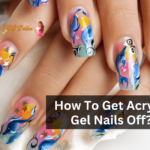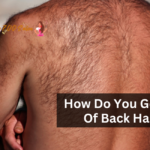Ingrown hairs on the legs are not only ugly but also painful. Ingrown hairs, whether caused by shaving, waxing, or other hair removal treatments, can cause redness, irritation, and even infection if left untreated.
In this detailed article, we will look at how to prevent and cure ingrown hairs on your legs so you may have smooth, bump-free skin.
Best Way To Get Rid Of Ingrown Hairs On Legs
Use The Proper Shaving Cream
Applying shaving cream before using your razor adds moisture, which can help avoid cuts and allow the blade to smoothly glide across your flesh.
Apply shaving cream to your legs as soon as you get out of the shower to retain moisture.
Exfoliate With The Best Body Scrub
A buildup of dead skin cells obstructing hair follicles can also create ingrown hairs on your legs.
Exfoliate your legs with a body scrub before shaving to lessen the possibility of ingrown hairs. This procedure is quick and can leave your skin feeling soft and revitalized.
Body scrubs can clear your pores, eliminate grime, and reveal healthier skin layers. These scrubs can also help to lessen the visibility of black patches created by earlier ingrown hairs.
Use The Proper Razor
If you have recurring ingrown hairs on your legs, you may be using the wrong type of razor. Although body cleansers and shaving lotions can exfoliate your legs and help your skin maintain moisture, depending on the razor you choose, you may still get ingrown hairs.
To avoid ingrown hairs on your legs, ensure your razor glides easily over your skin. Hair might become trapped in the razor if you don’t have a smooth glide, resulting in ingrown hairs and wounds.
Shave using a sharp razor in the direction of the grain of your hair. After each use, clean your blade with alcohol, and discard disposable razors after a few usages.
To avoid cutting too near to your skin, use single-edge razors or razors with a skin guard.
Try Dry Brushing
Although body washes exfoliate your skin, dry brushing can help prevent ingrown hairs. Use a long-bristled brush to exfoliate dead skin cells from your legs.
Dry brushing regularly before showering removes dead skin cells and softens your skin.
For the greatest results, use a brush with natural, non-synthetic bristles. For hard-to-reach areas, a brush with no handle or an extended handle is also available.
Smooth On An Aftershave Cream
Aftershave creams aren’t just for shaving your face. To prevent ingrown hairs, use these lotions and gels after shaving your legs.
These products moisturize your legs and keep your pores clear. Choose an alcohol-free cream or gel to avoid post-shave irritation.
What Are The Signs Of An Ingrown Hair?
Ingrown Hair Signs Include
Irritation of the skin
On your face and neck, little pimples with hairs in the center (papules).
Pain
Color change (red, brown, or purple).
Itching
Ingrown hairs that become infected may grow larger and more uncomfortable. Pustules arise when pus collects around follicles. This illness can cause scarring.
What Are The Causes Of Ingrown Hairs?
Ingrown hairs are caused by a variety of factors, some of which are beyond your control and others which are. The texture of your hair is on the first list. Curly-haired people are more prone to ingrown hairs.
As the hair curls, it is readily diverted and begins to grow back into the skin rather than out. It’s not your imagination if you have more ingrown hair lumps on your bikini line than anywhere else. Because pubic hair is coarser and curlier, it is more prone to developing ingrowns.
This is where your preferred method of hair removal comes into play in terms of things you can control. Shaving can be more difficult than waxing or even sugaring hair removal, especially if you want a really close shave.
When hair is shaved too near to the skin, it develops a sharp edge that might reenter the skin and cause an ingrown. Tweezing, especially near the bikini line, can also cause pimples because it can leave a hair fragment under the skin’s surface and cause inflammation.
Ingrown hairs on the legs can be both an aesthetic and a functional issue. Fortunately, you can attain smooth and healthy-looking legs by taking preventative precautions and employing the appropriate treatments. When it comes to preventing and treating ingrown hairs, remember that consistency is crucial.
Thanks for reading. I hope you find it helpful.










